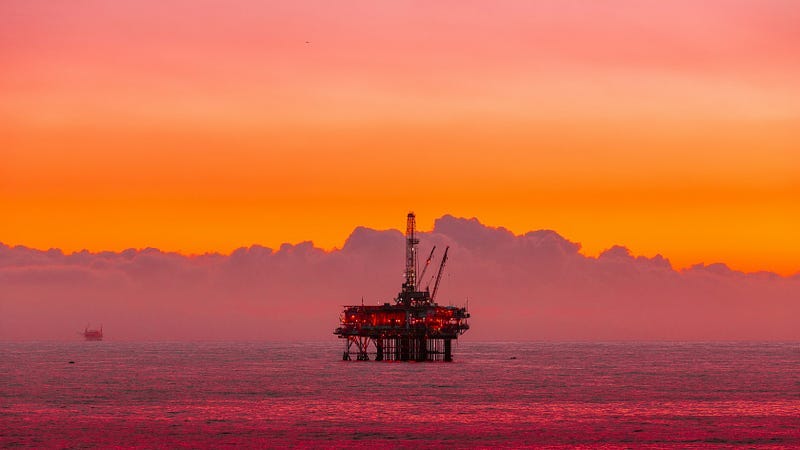The Falklands Have A Far More Valuable Untapped Resource Than Its New Found Oil
The islands have a far more valuable resource.

Just over a month ago, a Russian research vessel discovered a giant oil field just in the coastal waters of the British-owned Falkland Islands. At the time, this sparked fears of Russia sparking WW3 by trying to take this resource from the UK, who have a history of being quite defensive of their South Atlantic territory. These fears have now quietened down, but the Falklands recently announced they are open to the possibility of oil exploration in its waters for the first time ever. Why? Well, tens of billions of dollars are to be made from their newly discovered oil. However, the Falklands also has a far more valuable, longer-lived, far less environmentally damaging resource that it hasn’t tapped.
Let’s start with the oil. The Russians found roughly the equivalent of 1.7 billion barrels of oil in the Falkland’s waters. So, how much is that worth? Well, in 2021, oil prices averaged $71 a barrel, with profits of roughly $15 per barrel. As such, this oil field could produce $25 billion in profit! It will take decades to extract all that oil, but nonetheless, it still represents a substantial potential economic uplift for the Falklands and the UK.
But I would argue the Falklands has a better, untapped resource: wind. The Islands sit in the “roaring forties” where wind speeds top 40 knots (46 mph / 74.08 kph) regularly. In fact, it is one of the windiest places on planet Earth.
So, could the Falklands make more money from wind than it can from oil? Let’s do the rough maths.
The average wind speed on the Falklands is 31 kph (19.3 mph), which is staggeringly high. A modern high wind speed wind turbine has a rotor radius of around 57 meters and a coefficient of performance of roughly 0.5. Using the formula P = 0.5 Cp ρ π R2 V3, where Cp is the coefficient of performance, ρ is the air density, R is the blade length (in meters), and V is the wind speed, we can calculate the average power of a wind turbine in the Falklands. This comes out as 0.6 MW, meaning a single turbine produces, 5256 MWh per year on the Falklands.
A modern turbine of this size takes up roughly half a square kilometre, and the Falklands land area is 12,000 square km. So, let’s max out the islands with 24,000 wind turbines. This giant hypothetical wind turbine fleet would produce 126,144,000 MWh per year.
So, how much profit would that make? Well, wind energy typically sells for $75 per MWh. Each wind turbine would cost around $1.2 million to install and require around $30,000 in maintenance and operational costs annually. This project would also have financing costs. These turbines will have a life of 25 years and have been financed through a loan at the industry standard of 4% interest. Do the maths, and this massive wind farm will produce $66.77 billion annually!
However, there are no local energy users to sell this energy to, so they would likely have to convert it and sell the energy as green hydrogen. Modern electrolysis is 80% efficient, and each kg of hydrogen contains 55 kWh of potential energy. This means our turbines can produce 18.3 billion kg of green hydrogen yearly. Wind-derived green hydrogen sells for around $10 per kg and has a profit margin of around 25% (which includes costs such as wind energy, electrolysis, storage, transport and finance costs). As such, our gargantuan wind farm could make $54.9 billion per year selling green hydrogen!
So even if the Falklands only converted half of their island to a green hydrogen-producing onshore wind farm, they could make more profit in a single year than they could from this newly discovered oil.
Now, these calculations are all very rough. For example, it doesn’t consider how wind turbines downwind from others would get less wind or how the green hydrogen market would fluctuate with this new supply. It also doesn’t consider the ethical issues of turning such huge swathes of land into wind farms. However, it nonetheless shows that we are blinded by our old ways of finding economy-saving profits in oil rather than more eco-friendly, more sustainable, and more profitable resources. I mean, no one is even talking about turning the Falklands into a green hydrogen hub despite its wealth of available wind energy, and as we have seen today, they really should be!
So, the question has to be asked: Why even bother looking into the Falklands oil?
Thanks for reading! Content like this doesn’t happen without your support. So, if you want to see more like this, don’t forget to Subscribe and help get the word out by hitting the share button below.
Sources: The Telegraph, Thunder Said Energy, OGV, UKOTCF, Siemens Gamesa, Enercon, Sciencing, Falkland Islands, Convenience, CB, Reuters, Cleantechnica, Burges Salmon, GHS, Will Lockett, Renewables First

